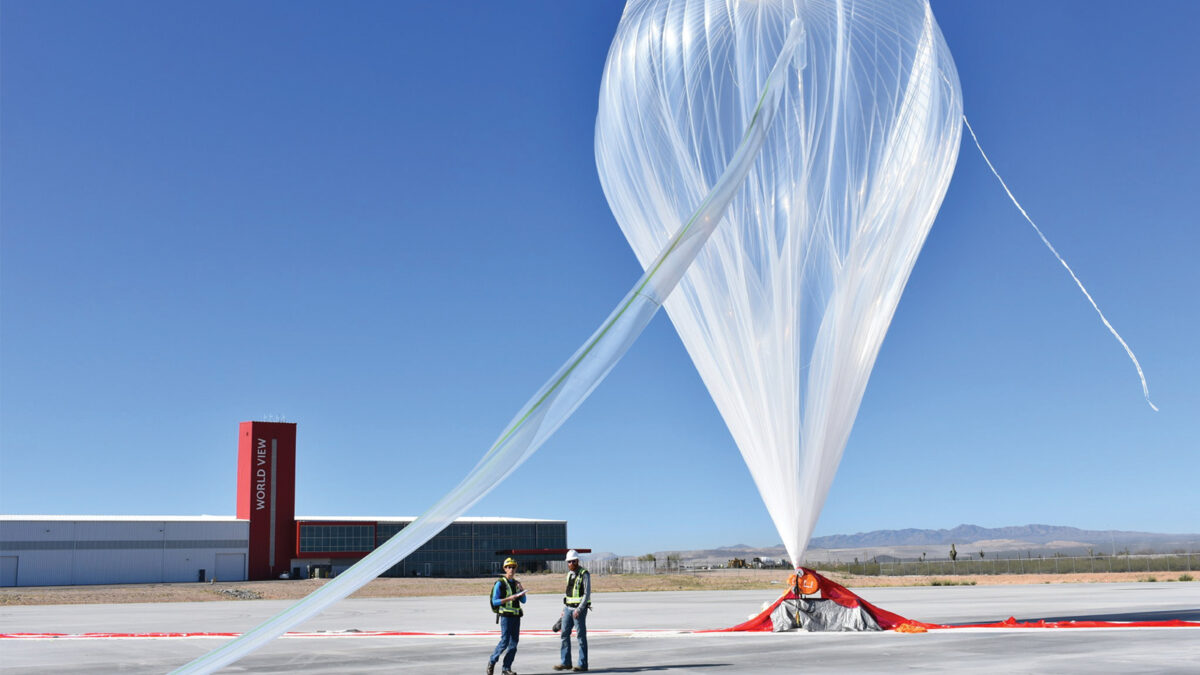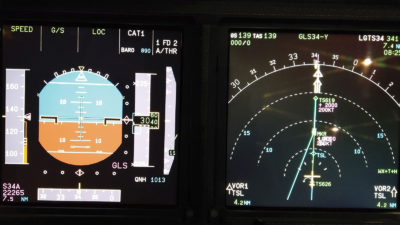Forecasting space weather to protect travelers
By Matthew J. Pruis|December 2018
The Atmospheric and Space Environments Technical Committee encourages the exchange of information about the interactions between aerospace systems and their surroundings.
Space weather affects the daily lives of many people in subtle ways. One example is radiation exposure on aircraft. Flights can be diverted to lower radiation regions so people onboard spend less time in higher radiation areas. A variety of phenomena contributes to space weather, from galactic cosmic rays, to solar flares, to the Van Allen radiation belts, and the corresponding variability requires simulating or observing processes that vary on scales from hours to years.
To help enable air traffic management to monitor global radiation “weather,” the Automated Radiation Measurements for Aerospace Safety, or ARMAS, Flight Module 5 launched on a World View stratospheric balloon in Tucson, Arizona, in March. The ARMAS system uses airborne sensors and ground-based servers to enhance space science research and improve aviation safety. While in flight — which achieved an altitude of 115,000 feet — ARMAS data were retrieved in real time via an Iridium satellite and downlinked to the ground for use by NASA’s Nowcast of Atmospheric Ionizing Radiation for Aviation Safety, or NAIRAS, model of the global radiation environment. ARMAS data in NAIRAS yields an improved accuracy of radiation dose rates along with airborne flight tracks, allowing commercial air traffic to avoid higher radiation areas.
Future improvements in the ability to directly forecast major upcoming space weather events is also expected as NASA’s Parker Solar Probe was launched via United Launch Alliances’ Delta 4 rocket from Cape Canaveral Air Force Station, Florida, in August. The mission will “touch the sun,” flying directly through the solar corona, facing extreme radiation conditions and providing unprecedented, close-up observations of the sun. A 4.5-inch-thick carbon-composite shield is required to protect the spacecraft and instruments from the extreme environment, which will include temperatures of nearly 1,400 degrees Celsius. The Parker Solar Probe observations will address unsolved science questions, such as how the sun’s corona is heated and how solar wind is accelerated.
Also this year, NASA completed two tests focused on engine ice-crystal icing. Ice-crystal icing can lead to power-loss events in aircraft when jet engines ingest a large amount of ice crystals during flight in clouds. In January, an ice-crystal icing test using a full-scale engine was completed at the Glenn Research Center’s Propulsion Systems Laboratory. In May and June, a second test investigating the fundamentals of ice-crystal icing using a static airfoil took place. This data will help develop ice-crystal accretion modeling tools that ultimately seek to reduce icing issues for future engine designs.
NASA’s Langley Research Center, Glenn Research Center and Armstrong Flight Research Center partnered with the FAA to conduct the High Ice Water Content Radar 2 flight campaign, which ended in August. The campaign’s goal was to advance work on newly defined pilot weather radar algorithms to identify regions of high ice water content ahead of aircraft. Flights were carried out in the Atlantic and the Eastern Pacific, and the radar identified regions of HIWC approximately 60 nautical miles ahead of the aircraft. Remote identification of HIWC will enable pilots to avoid areas that can cause engine power-loss events and air data system anomalies.
Photo: World View’s Stratollite high-altitude balloon lifted off from the company’s launch facility in Tucson, Arizona, in March, reaching a float altitude of 115,000 feet carrying instruments to detect radiation. Credit: NASA



































